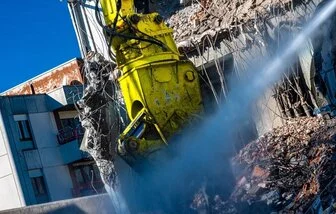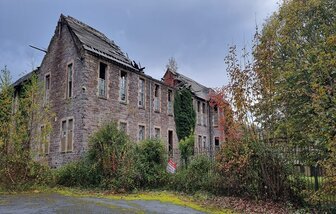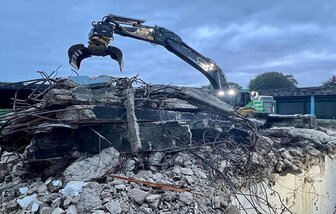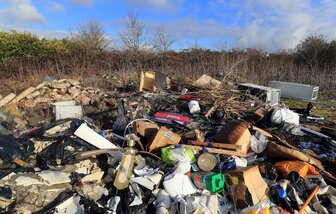All you need to know about dealing with waste in demolition
Proper waste management is a critical aspect of demolition projects, ensuring that waste is handled responsibly and in compliance with UK law. By implementing effective waste management practices, such as waste segregation, recycling, and collaboration, the environmental impact of demolition can be minimised. It is essential for all stakeholders to understand and adhere to the legal requirements governing waste management to ensure a sustainable and environmentally friendly approach to demolition.
All you need to know about demolition Waste
Learn about waste management practices in demolition projects and the legal requirements that must be followed. Understand the types of demolition waste, effective waste management practices, and the laws and regulations governing waste management in the UK.
Proper waste segregation, recycling, and collaboration can minimize the environmental impact of demolition. Compliance with waste management regulations is crucial to avoid legal consequences and ensure a sustainable approach to demolition.
Demolition projects are an essential part of urban development, allowing for the renewal and revitalisation of existing structures.
However, these projects also generate a significant amount of waste that needs to be properly managed and disposed of in compliance with UK law.
This article will provide an overview of waste management practices in demolition and the legal requirements that must be followed.
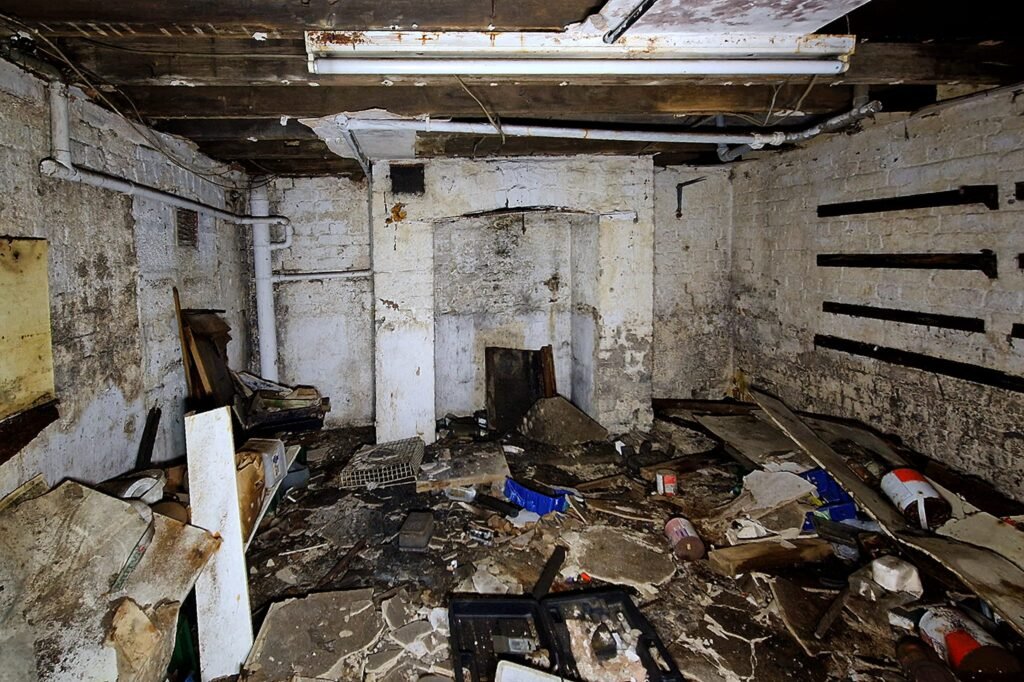
Demolition waste refers to the materials and debris that are generated during the process of tearing down buildings or structures. This waste can include concrete, bricks, metals, wood, plastics, and other construction materials. It is important to note that not all of this waste is considered hazardous, but it still needs to be handled responsibly to minimize its impact on the environment.
Effective waste management practices are crucial in demolition projects to ensure that waste is handled safely and in an environmentally responsible manner. Here are some key practices to consider:
- Waste Segregation: Properly segregating waste at the source is essential for efficient waste management. This involves separating different types of waste materials into designated containers or areas, allowing for easier recycling and disposal.
- Recycling and Reusing: Maximizing the recycling and reusing of demolition waste can significantly reduce the amount of waste sent to landfills. Materials such as concrete, bricks, and metals can often be recycled and used in new construction projects.
- Safe Disposal: Hazardous waste, such as asbestos or lead-based paint, must be handled and disposed of according to specific regulations. It is essential to engage licensed professionals for the safe removal and disposal of hazardous materials.
- Waste Tracking: Keeping accurate records of the types and quantities of waste generated during demolition is important for compliance with UK law. This information may be required for waste management plans and reporting purposes.
- Collaboration: Effective waste management in demolition often requires collaboration between contractors, waste management companies, and local authorities. Regular communication and coordination are essential to ensure compliance with regulations and the smooth flow of waste management processes.
Demolition waste management in the UK is governed by various laws and regulations, including:
- Environmental Protection Act 1990: This act sets out the legal framework for waste management and outlines the duty of care for waste producers, carriers, and disposers.
- Control of Asbestos Regulations 2012: These regulations provide guidelines for the safe handling, removal, and disposal of asbestos-containing materials.
- Construction (Design and Management) Regulations 2015: These regulations require proper planning and coordination of waste management activities in construction and demolition projects.
- Waste Hierarchy: The waste hierarchy is a guiding principle that prioritizes waste prevention, reuse, recycling, and recovery over disposal. It is important to follow this hierarchy when managing demolition waste.
Disposing of demolition waste is an important task that requires careful consideration to ensure compliance with environmental regulations in the UK. Improper disposal of such waste can have detrimental effects on the environment and public health. In this article, we will explore the proper methods and locations for disposing of demolition waste in the UK.
The disposal of demolition waste in the UK is regulated by the Environmental Agency. It is important to be aware of the legal obligations and requirements when it comes to waste disposal. Failure to comply with these regulations can result in fines and penalties.
One of the key legal requirements is the need to separate different types of waste and dispose of them appropriately. This includes segregating hazardous materials from non-hazardous ones. It is essential to identify any hazardous substances present in the waste and handle them accordingly.
There are several methods available for the disposal of demolition waste in the UK:
- Recycling: Recycling is an excellent way to reduce the environmental impact of demolition waste. Many materials, such as concrete, wood, and metals, can be recycled and reused in new construction projects. Recycling not only helps conserve natural resources but also reduces the amount of waste sent to landfills.
- Landfill: When recycling is not feasible or appropriate, landfill disposal may be necessary. However, it is important to note that landfill should be the last resort. Landfill sites should be licensed and comply with regulations to minimize environmental harm. It is crucial to separate hazardous waste from non-hazardous waste and dispose of them in designated areas within the landfill.
- Waste-to-Energy: Waste-to-energy facilities can convert certain types of demolition waste into energy through incineration. This method helps reduce the volume of waste and produces energy in the process. However, it is important to ensure that the facility is authorized and meets all necessary environmental standards.
- Donation or Reuse: Some materials from demolition waste may still be in usable condition. Consider donating or reusing these materials instead of disposing of them. This not only helps reduce waste but also benefits organizations or individuals who can make use of them.
When it comes to finding appropriate disposal locations for demolition waste, there are several options:
- Local Authority Waste Facilities: Many local authorities provide waste facilities where you can dispose of demolition waste. These facilities often have specific areas for different types of waste, ensuring proper disposal and recycling.
- Private Waste Management Companies: There are also private waste management companies that specialize in handling and disposing of different types of waste. These companies have the expertise and resources to manage demolition waste in compliance with environmental regulations.
- Recycling Centers: Recycling centers are another option for disposing of demolition waste. These centers are equipped to handle various recyclable materials and ensure they are processed correctly.
- Online Resources: There are online resources available that can help you find the nearest disposal locations for demolition waste. These resources provide information about recycling centers, local authority facilities, and private waste management companies in your area.
Properly disposing of demolition waste is crucial for protecting the environment and complying with legal obligations in the UK. By understanding the various methods of disposal and finding the appropriate disposal locations, you can ensure that demolition waste is handled responsibly and in accordance with environmental regulations. Remember, recycling and reusing materials whenever possible can greatly reduce the environmental impact of demolition waste
What is demolition?
The process involves Rotational hydraulic shears and rock-beakers attached to specialist excavators are also used to cut or break through wood, cut steel and crush concrete which reduces the structure to a rubble
Securing your demolition project
Implementing robust security measures, such as perimeter fencing, access control, signage, surveillance systems, and proper lighting, can significantly reduce the
Demolition hazards
If a demolition project is well planned the risks of injury and death can be minimised. It should be emphasised that the planning and execution of a demolition project should only be done by appropriately competent persons.
Notification of intended demolition Section 80
If your considering demolishing an existing building you will need to submit a demolition, Section 80 Notice together with your (RAMS) to your local authority according to section 80
Welfare facilities
Welfare facilities are an essential component of any demolition project. By providing suitable facilities, employers prioritize the well-being and safety of their workers, leading to increased
Demolition plant
Demolition plant is essential in the construction industry, as they ensure the safe and efficient removal of structures. By following strict guidelines and regulations, these plants prioritise safety, efficiency, and sustainability.
Utilities disconnection
Terminating utilities at the boundary is a critical step in the demolition process. It ensures the safety of the demolition crew and the surrounding environment, helps comply with regulations, prevents damage to utilities
Internal soft strip
Soft strip demolition is a crucial process that involves the removal of the internal structure of a building, making it ready for demolition or refurbishment. This process includes the careful removal of various materials.
Planning your demolition project
Learn how to create an effective demolition plan for your construction project. This comprehensive guide covers the key steps, including site assessment, hazard identification, safety measures, waste management, and more.
Managing asbestos
Learn about the dangers of asbestos, its different types, and where it can be found. Understand the health risks associated with asbestos exposure and the importance of proper testing and safe removal. Protect yourself and others from the harmful effects of asbestos.
Dealing with waste
Learn about waste management practices in demolition projects and the legal requirements that must be followed. Understand the types of demolition waste, effective waste management practices, and the laws and regulations governing waste management
Hazardous waste liquids
Hazardous liquids in demolition projects. Understand the importance of identifying, segregating, and properly disposing of hazardous waste. Follow the guidelines the safe handling, storage, and disposal of hazardous
Ready to start your project ?
Let's Work Together
Please complete the form below and someone from the Total team will be in touch.

